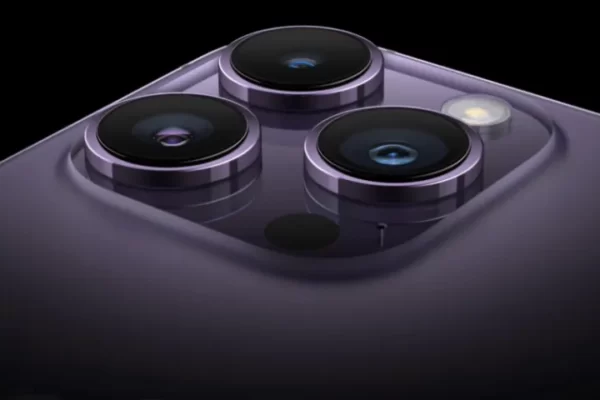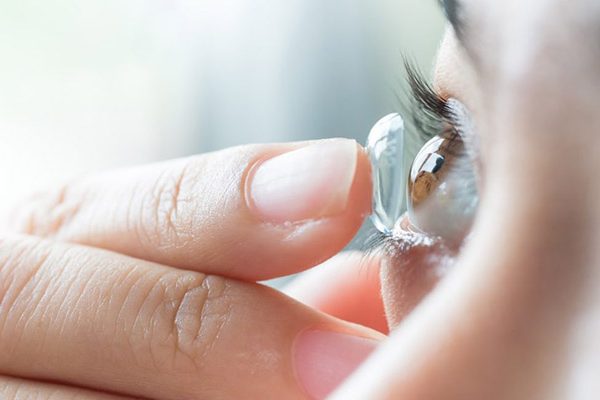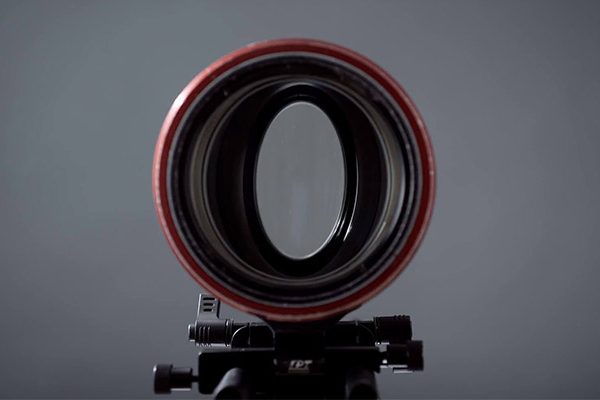What is a photochromic lens? They are the kind of lenses that change color when exposed to UV light from the sun or other sources.
If photochromic lenses are something you’re thinking about, you should be aware of how they operate, pros and cons, and how to choose the best ones for you. If you’re curious, read on!
Table of Contents
- What Is A Photochromic Lens?
- What Are Photochromic Lenses Used For?
- How Do Photochromic Lenses Work?
- What Are Photochromic Lenses Made Of?
- Pros And Cons Of Photochromic Lenses
- How Can UV Light Damage Your Eyes?
- Types of Photochromic Glasses
- Are Photochromic Lenses A Good Choice for You?
- Can I Drive With Photochromic Sunglasses On?
What Is A Photochromic Lens?
When exposed to sunlight or UV light, photochromic lenses darken to a sunglasses tint, and when used indoors and away from UV light, they clear up.
Photochromic lenses, also known as transitions or reactolights, can be created from a variety of lens materials, such as plastic, glass, or polycarbonate. They are typically used as sunglasses that easily change from a clear lens indoors to a sunglasses depth tint when outdoors, and vice versa.
They usually take about 30 seconds to completely darken and anywhere from two to five minutes to become clear again.
The Corning Glass Works Inc. developed photochromic lenses in the 1960s., and became the first variable tint/photochromic lenses brought to the marketplace.
Read More: What is a Toric Contact Lens?
What Are Photochromic Lenses Used For?
For those who must constantly wear glasses, photochromic lenses are the best option. Photochromic lenses serve two main functions: shielding your eyes from UV rays and doing away with the need for a separate pair of prescription sunglasses.
The lenses offer constant total protection from UVA and UVB rays. It doesn’t matter if the lenses are clear or opaque at any given time for this protective feature to work.
The two types of UV light that can pass through Earth’s atmosphere are UVA and UVB rays. In terms of your health, they’re the main kinds that should worry you.

How Do Photochromic Lenses Work?
Before being exposed to sunlight or UV rays, a photochromic lens is clear and invisible due to the minute silver halide and chloride molecules that are embedded within it.
When exposed to sunlight or ultraviolet radiation, molecules move, change shape, and absorb light as a result of a chemical reaction. As a result of this process, the molecules change and take on a tint or shade suitable for sunglasses.
The photochromic lens will remain in this “darkened” sunglasses state while exposed to sunlight or UV rays, and the molecules will reverse the process once the lenses are removed from the sunlight or UV rays, returning to the original “transparent/clear” lens.
What Are Photochromic Lenses Made Of?
Glass lenses are much less common than more recent synthetic materials these days. A type of plastic or resin is used to make the majority of lenses. This change occurred because resins are typically lighter and more durable than glass. Additionally, they are more difficult to scratch and are simpler to evenly coat or infuse with photochromic molecules.
Resins can be created in a variety of ways, then dyes can be added to them as needed. Compared to glass, they are a more malleable material to work with because of this.
There are many different photochromic lens brands available. The base materials and dyes used to create lenses vary between brands. Consequently, even though all photochromic lenses function roughly in the same way, the differences in lens materials change the lens’ properties, including how quickly their color changes.
You can choose from a variety of materials, including metal and plastic, for the frames that hold your lenses.
Pros And Cons Of Photochromic Lenses
Although there are some drawbacks, photochromic lenses are a very practical, economical, and advantageous purchase overall.
There are pros and cons of photochromic lenses and sunglasses, including those listed below:
Pros Of Photochromic Lenses
- Cost savings: It is more affordable to purchase a single pair of dual-purpose photochromic glasses that can serve as both indoor vision when it’s clear and sunglass protection outside than to purchase two separate pairs.
- Direct sunlight exposure can result in serious eye problems, and in some cases, blindness. Photochromic lenses offer complete protection against the sun’s harmful UV rays.
- Convenience – Owning just one pair of sunglasses eliminates the need to switch between two pairs of regular glasses and sunglasses when you’re inside and outside in the sun. You only need to keep in mind to bring one pair of glasses that you can use for both reading and driving, as we have all probably forgotten to bring our sunglasses out with us and been caught off guard by the sun’s glare or even left them behind never to be seen again.
- Eye Health – Reducing your exposure to the sun’s harmful UV rays can lower the risk of cataracts or another eye/age-related problems
Cons Of Photochromic Lenses
- Reaction Times – Although photo lenses react quickly from clear to sunglasses, typically within 30 to 60 seconds, the reverse reaction takes a little longer, up to 5 minutes depending on the temperature of the lens, which could be risky if entering a dark room or, at the very least, inconvenient.
- Driving – Standard photochromic lenses do not function inside a car because the windscreen blocks out the UV rays necessary to activate the chemical process that darkens the lens. (However, there are specialized photochromic lenses known as “transition drivewear lenses” that can react inside a car or behind glass and combine photochromic and polarization technology.
- Not Dark Enough – Even though photochromic lenses are useful for blocking UV rays and shielding you from the sun’s glare, they probably won’t be enough for anyone who experiences extreme high light levels. Fortunately, the lenses are suitable for the majority of wearers, but you must seek advice if any light conditions affect you.
How Can UV Light Damage Your Eyes?
All throughout your life, UV light is repeatedly exposed to you, primarily in the form of sunlight. UV radiation can harm your eyes and the skin around them over the course of your life. This means that using products like photochromic lenses to protect your eyes is important.
The types of eye damage that repeated UV exposure can lead to include:
- Cataracts. Your eye lenses become cloudy and progressively more opaque as a result of this condition. Blindness eventually results from cataracts. To cure this condition, surgery is required.
- Macular degeneration. For those over 55, this is one of the main causes of blindness. It is the end result of cumulative eye damage over the course of your lifetime. There is no cure at the moment.
- Corneal damage. For clear vision, your cornea is essential. This area of your eye is particularly vulnerable to UV lightwave damage.
- Skin damage. Additionally, UV deterioration can harm the skin around your eyes. Dryness, wrinkles, a loss of elasticity, and mottled pigmentation are a few skin issues brought on by UV radiation.
- Certain cancers. The DNA base pairs that make up your body’s DNA are hampered by UV light. This results in mutations that may result in cancer. One type of cancer that can infiltrate your eye is squamous cell carcinoma. Full surgical removal of your entire eye may eventually be necessary due to this kind of cancer.
Types of Photochromic Glasses
Photochromic lenses come in a huge range of options today. They come in a variety of styles made to suit your requirements. Examples include:
- Sports eyewear. During athletic events, only a few types of eyewear are safe to wear. Materials made of trivex and polycarbonate are among them. Both types of transition lenses are offered.
- Coated lenses. Photochromic lenses don’t interfere with the specific lens coatings that people prefer to have. For instance, anti-reflective coatings can help with glare reduction and are beneficial for nighttime driving. When you transition from a cold outdoor environment to a warm indoor environment, water-repellent treatments stop your lenses from misting over.
- Colorful lenses. Only gray-tinted photochromic lenses were offered in the past. However, regular sunglasses can be found in a variety of colors. You can now purchase brown or green photochromic lenses. You might not be able to find them in the color you prefer because the selection is still not as wide as with conventional sunglasses.
- Bifocal, multifocal, and high-index options. Certain lenses are made to address specific vision issues. The majority of popular styles of vision-correcting eyewear can be fitted with photochromic lenses. People who struggle with both distance and close-up vision, for instance, can benefit from bifocal versions. For those who require powerful prescriptions, high-index options are beneficial.
Are Photochromic Lenses A Good Choice for You?
Not everyone should use photochromic lenses. Before deciding that photochromic lenses are the best option for your eyeglass needs, weigh the advantages and disadvantages.
Things to keep in mind include:
- Cost. Compared to the alternatives, photochromic lenses are frequently more expensive. However, they are less expensive than purchasing a separate pair of prescription sunglasses in addition to your everyday glasses.
- they were unable to manage their transition. The transition between the lenses cannot be regulated. How much UV light they are exposed to will determine this. This can be a problem in areas with strong fluorescent lighting because it can still cause your lenses to transition indoors. Driving can result in the opposite issue. The lenses might not transition inside a car even if you want them to because windshields are made to block UV light.
- Temperature effects. Some photochromic lenses transition more slowly than usual in colder temperatures. During the winter, this can be annoying.
- Blue light protection. Both UV and blue light protection are given by these lenses. Not all lenses fall under this category. Digital eyestrain is frequently brought on by blue light, which is often found on phone and computer screens.
Can I Drive With Photochromic Sunglasses On?
Due to the windscreen blocking UV rays, which are necessary to activate the chemical process that causes the lens to darken, standard photochromic lenses do not function inside a car.
A new lens has been introduced to the market that can react inside a car or behind the windscreen using only daylight and no UV rays. These lenses, which combine polarization and photochromic technology, are referred to as “transition drive wear lenses.”
Because they offer complete protection from the sun’s glare during the day and were designed specifically for use in cars, as their name suggests, they are ideal for wearing while driving.
Read More:





